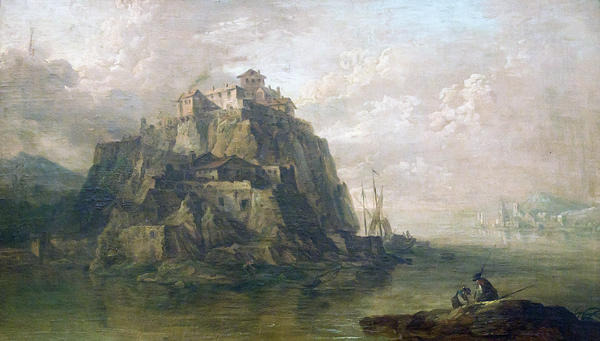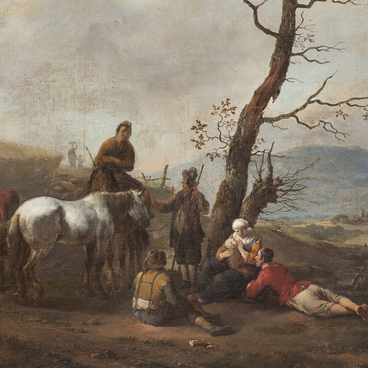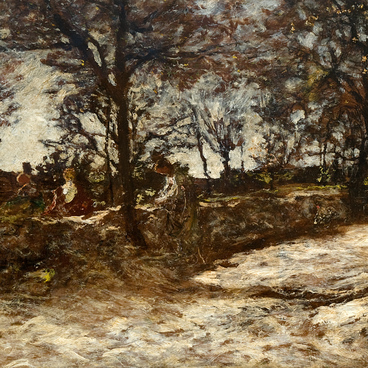This landscape is in the permanent exposition of the museum as a landmark piece of art in the collection of the Western European art. It stems from the collection of the founder of the Radishchev museum, Alexey Bogolyubov.
Artists from different countries liked to work on the shores of Normandy while observing the changing atmosphere of a seaside land. The forerunner of French impressionists, artists of Barbizon school, used to come here in order to paint on open air, to get skillful at conveying subtle nuances of color related to the lighting conditions. Judging by the title, a fortress island Mont Saint-Michel in the bay Saint-Malo on the north-western shore of France is depicted on the picture.
Artists from different countries liked to work on the shores of Normandy while observing the changing atmosphere of a seaside land. The forerunner of French impressionists, artists of Barbizon school, used to come here in order to paint on open air, to get skillful at conveying subtle nuances of color related to the lighting conditions. Judging by the title, a fortress island Mont Saint-Michel in the bay Saint-Malo on the north-western shore of France is depicted on the picture.
A Benedictine abbey built in the 19th-20th centuries rises on top. The painting Island of St. Michael could be of interest to Bogolyubov due to the fact that a famous monastery located on the island is depicted on it.
The gothic towers of it effectively rise over the plain. However, in fact gothic towers are lacking in the landscape and there is no confidence that this particular famous monastery was depicted on it. The photographs of a famous tourist facility have all reasons to doubt it. Why then Bogolyubov handed over a landscape with such title to the museum?
The answer can be like that: artists used to come to Normandy for tourist purposes, they were interested in picturesque merits of the seashore and the author of the picture could well modify the silhouette of the famous island pursuing his own artistic tasks. The European art luminaries worked there. Bogolyubov brought his disciples, Repin and Polenov, to the Norman shore. All together they painted on open air grasping the new methods of contemporary painting moving towards air and light. The physic-chemical research showed that the picture was painted on the cusp of the 18th and 19th centuries. However, Bogolyubov, being perfectly clued up about art, is right that the author of the landscape truly followed the traditions of Dutch landscapers of the 17th century, while applying the methods of multi-layer letter in conveyance of environment full of light and air.
The chemical research identified the availability of lead paints, soot, bitumen, Berlin azure and yellow ochre in the painting. This palette complies with the technologies of early 18th century. Using the experience of old masters in depiction of marine atmosphere, the artist could virtuously recreate a feeling of changeable marine atmosphere in his work. Probably, for Bogolyubov this picture served as an example of picturesque craftsmanship.



